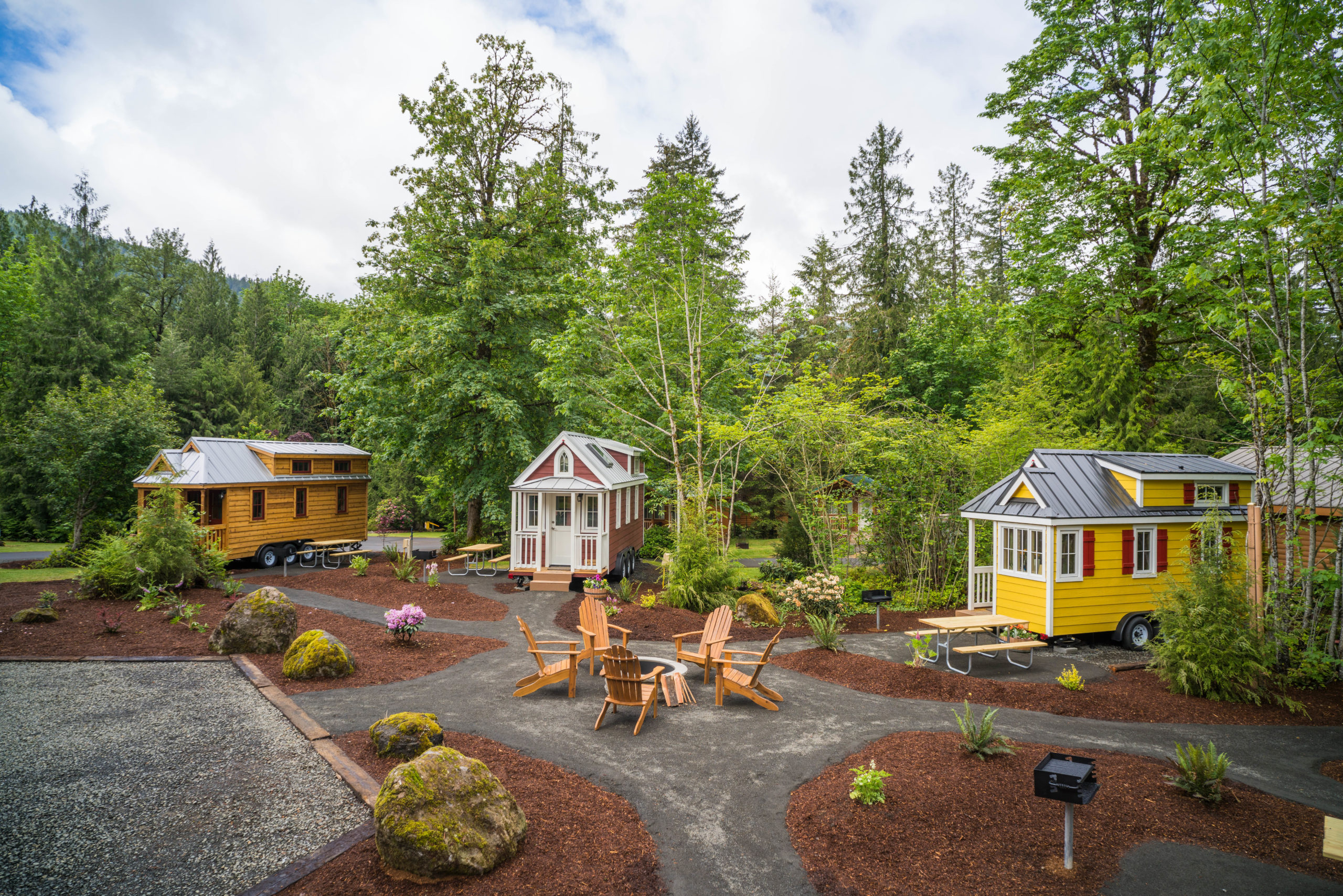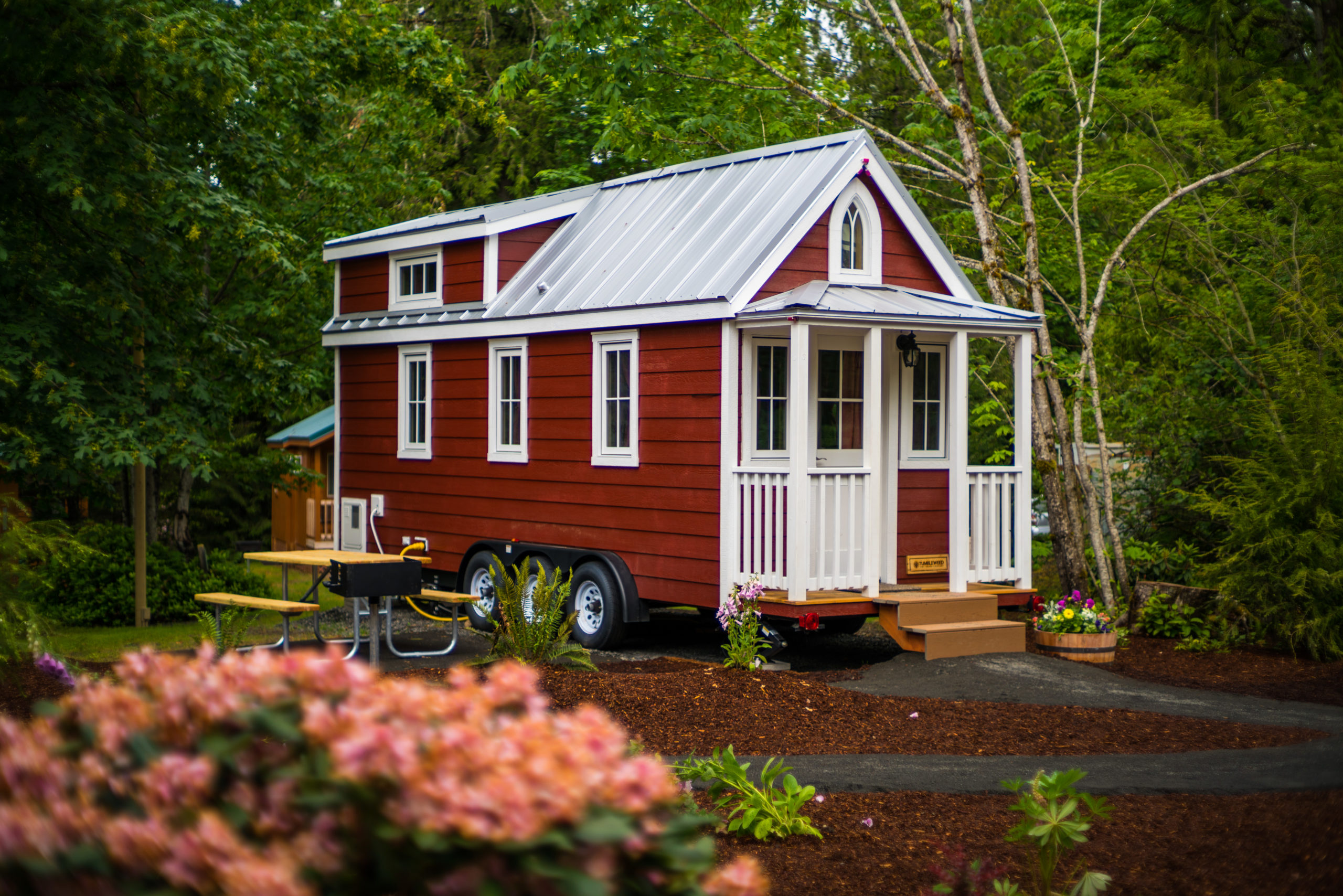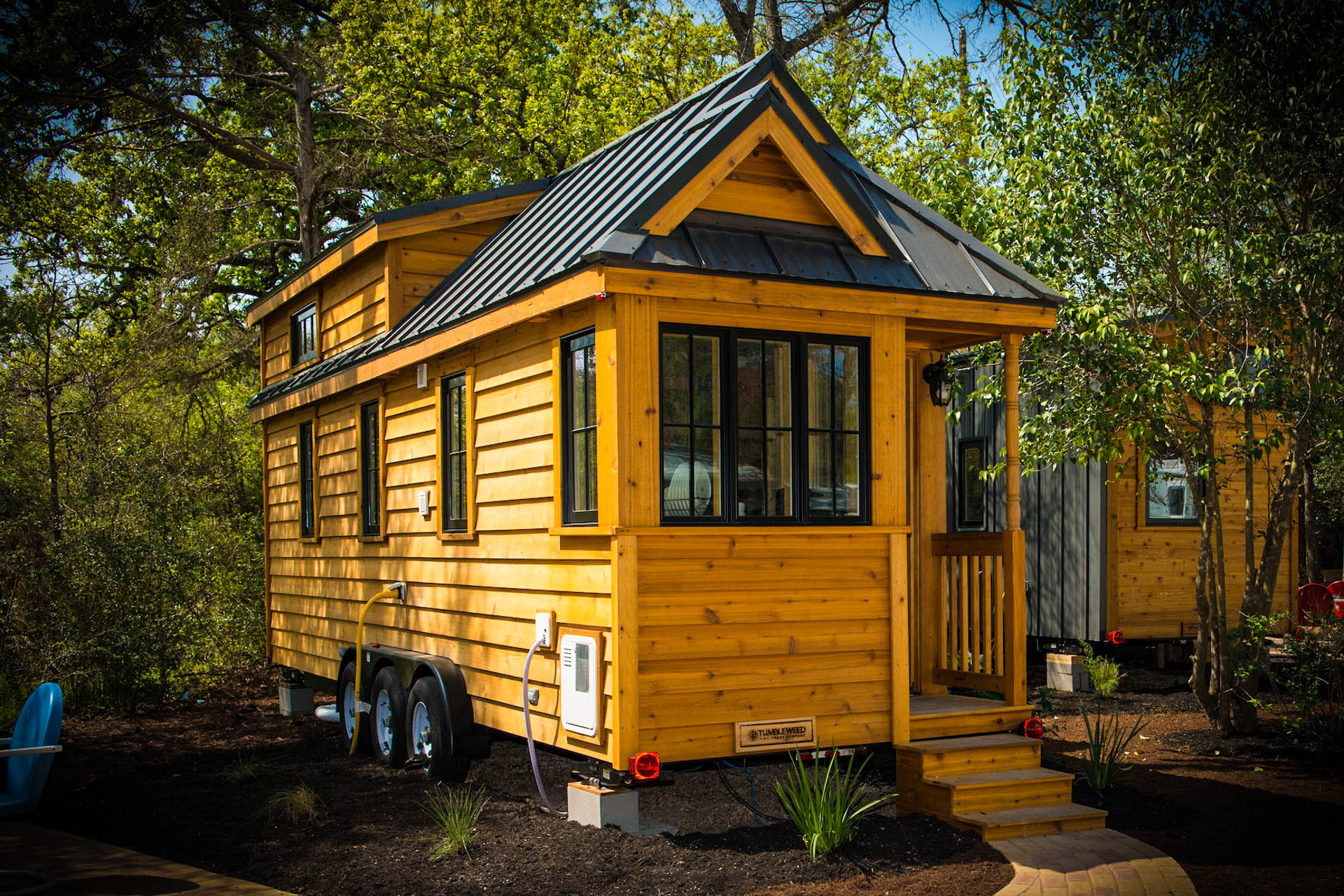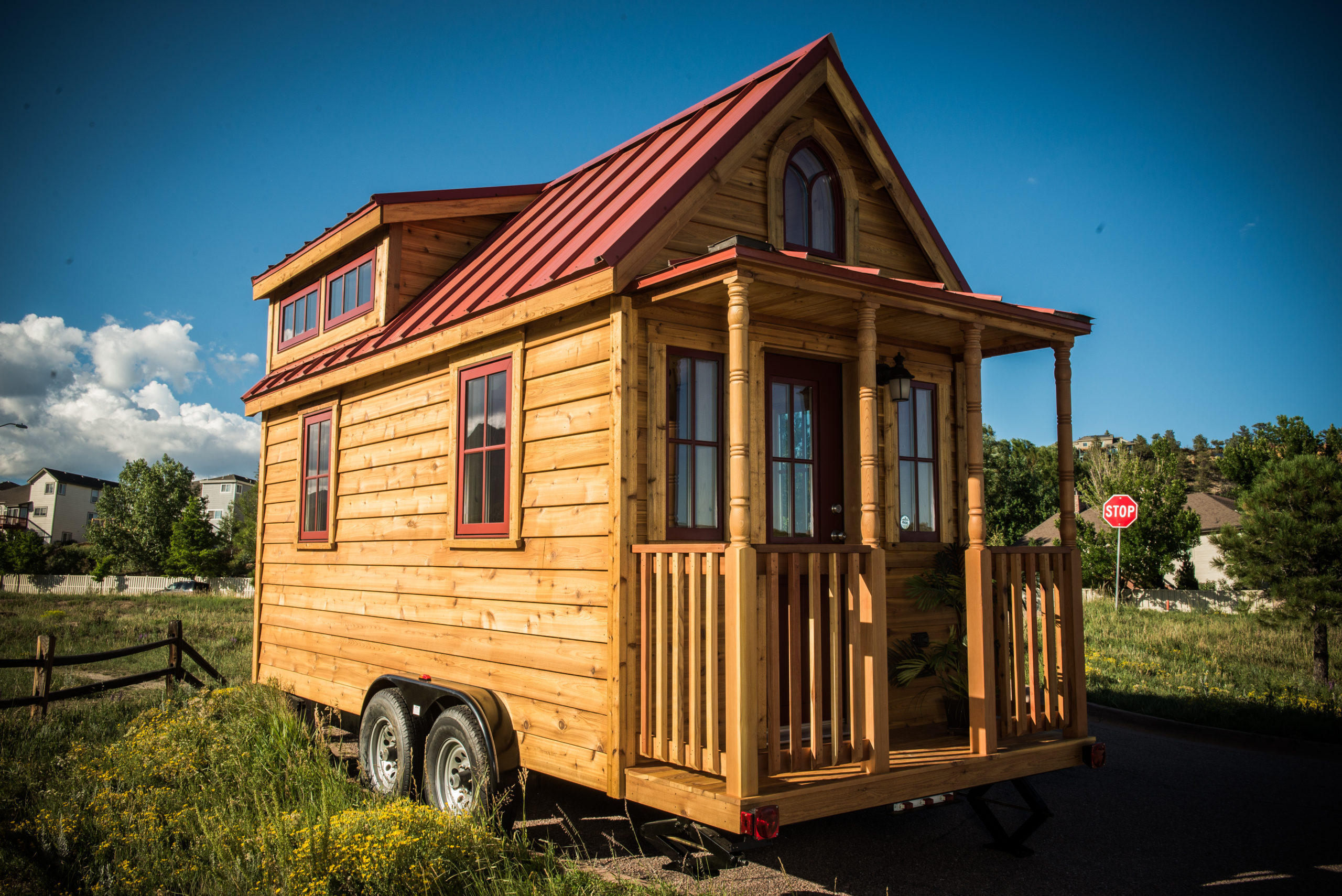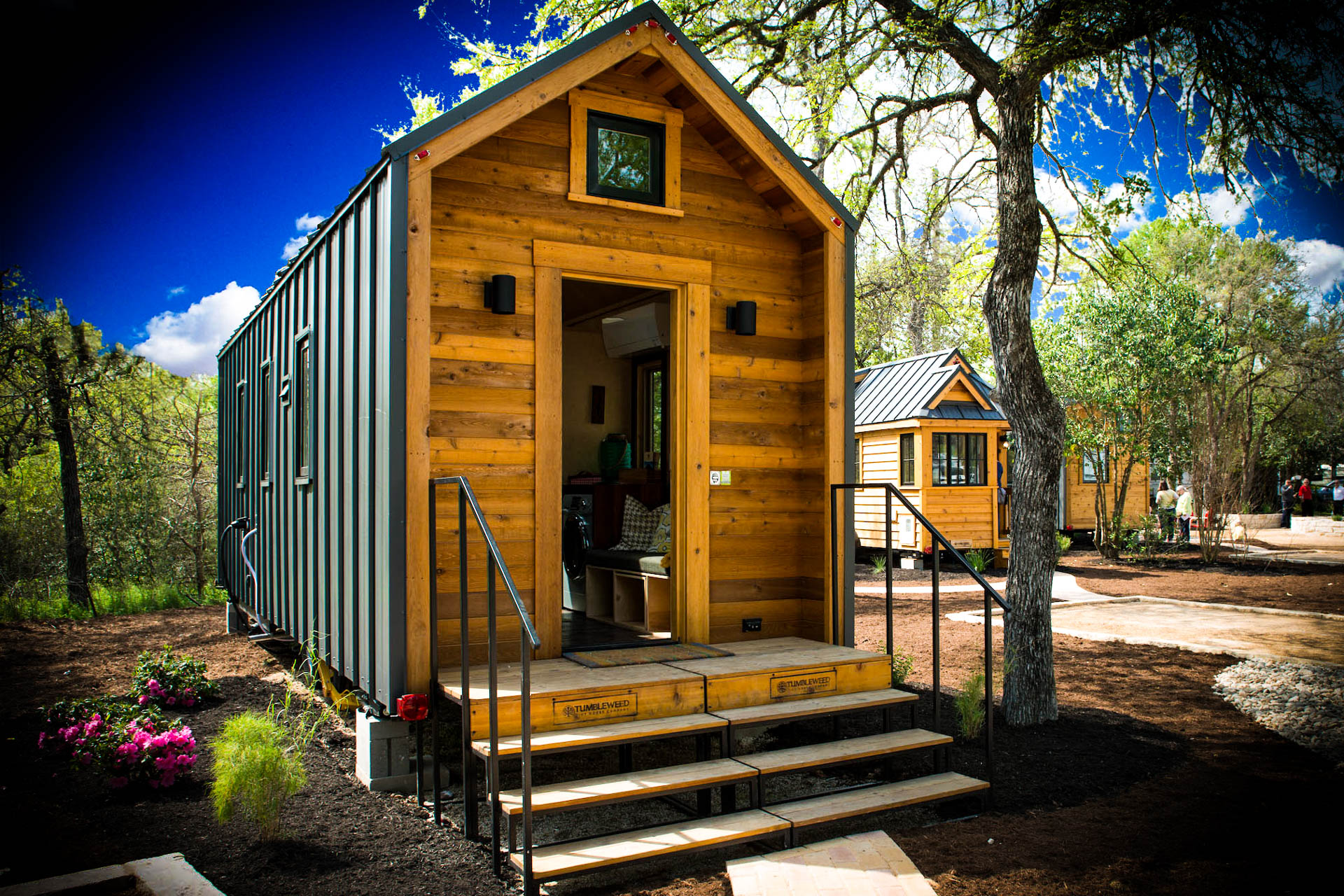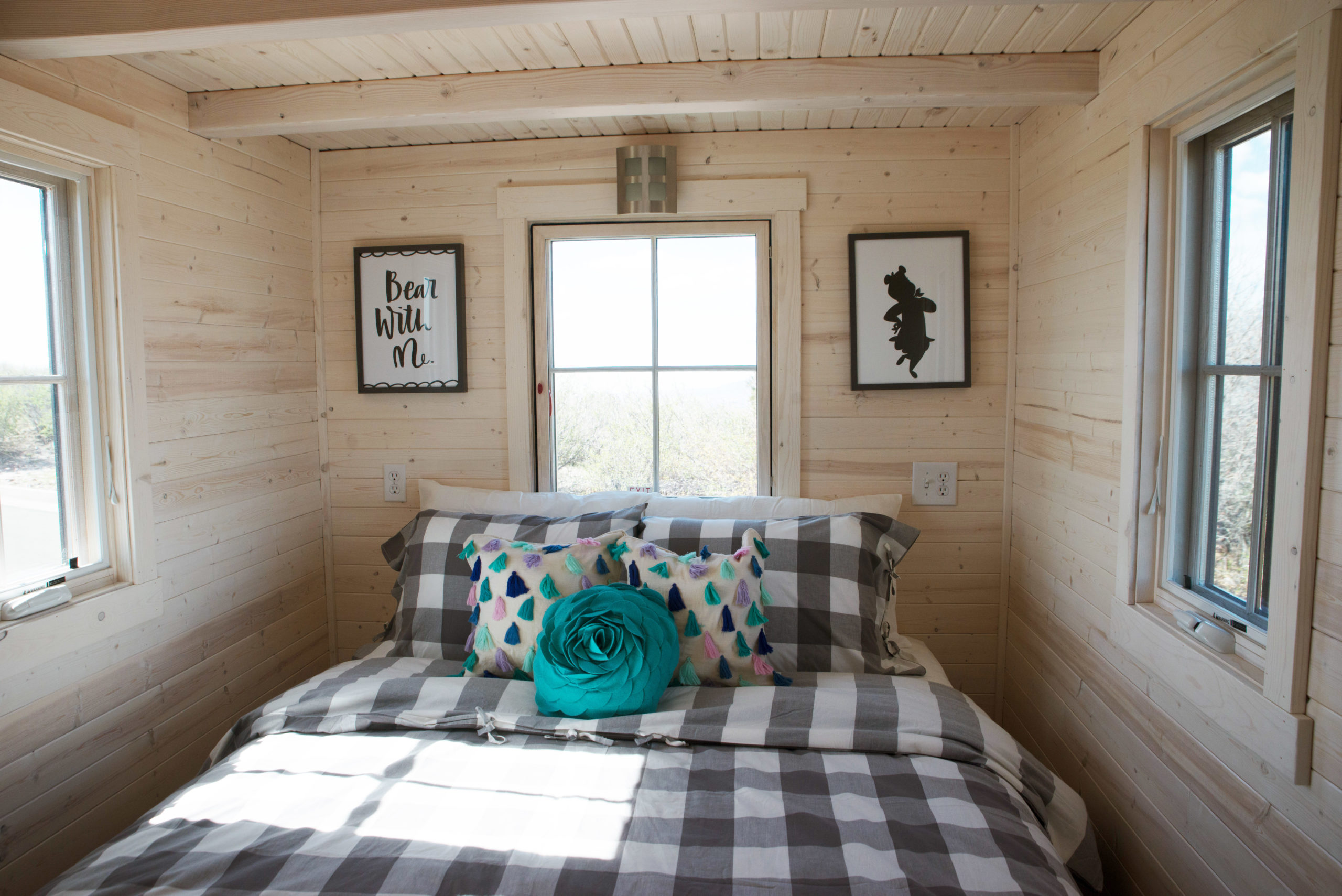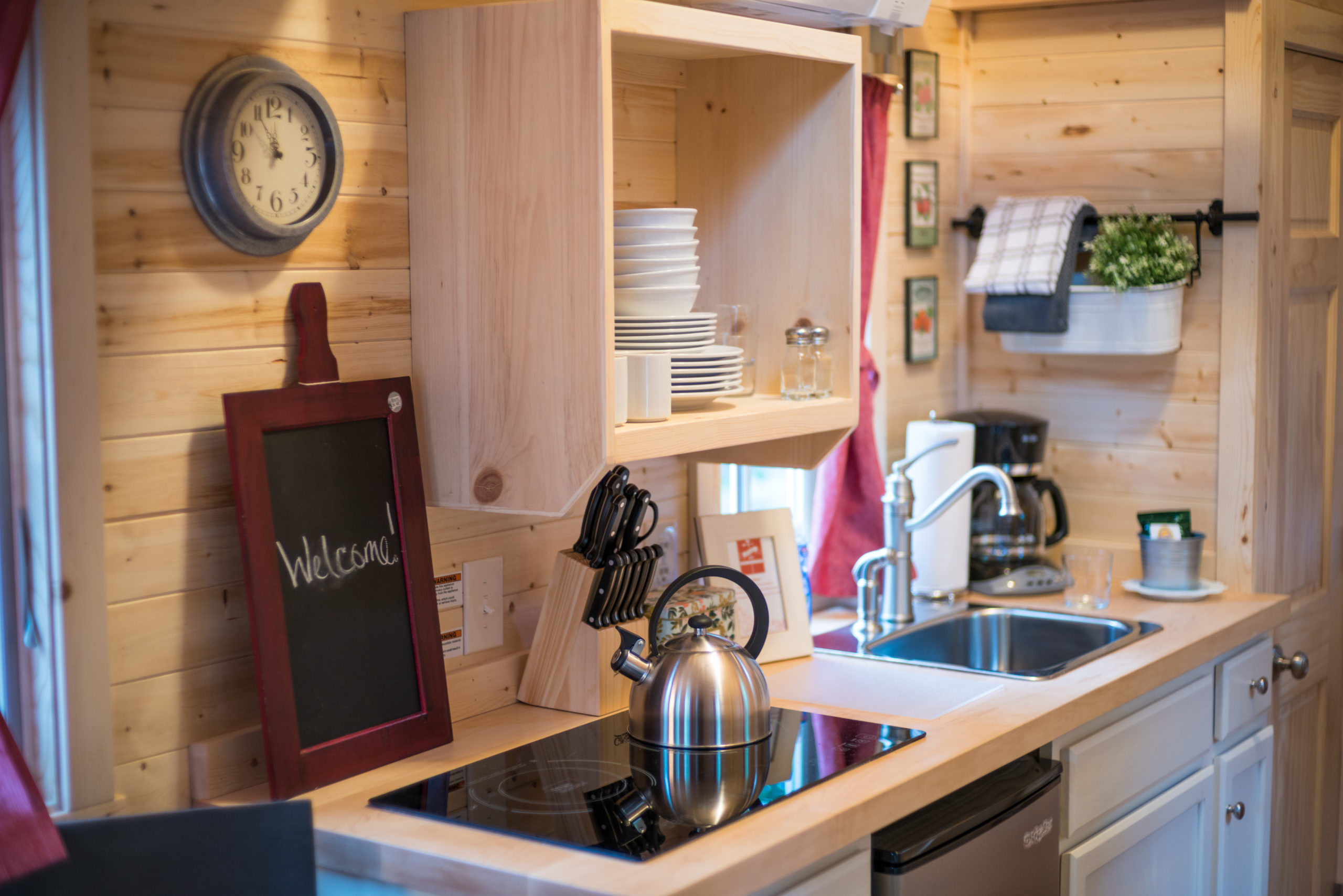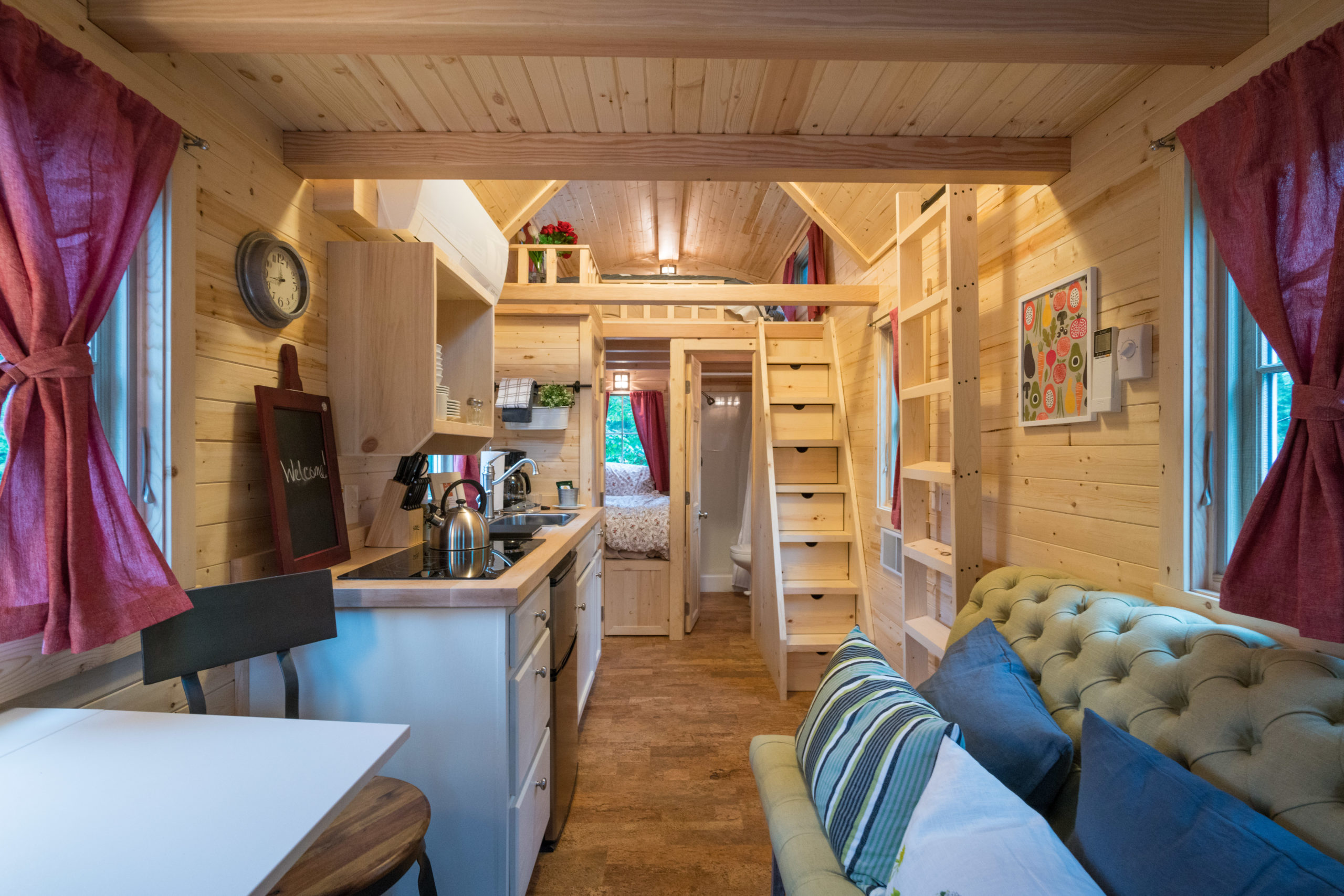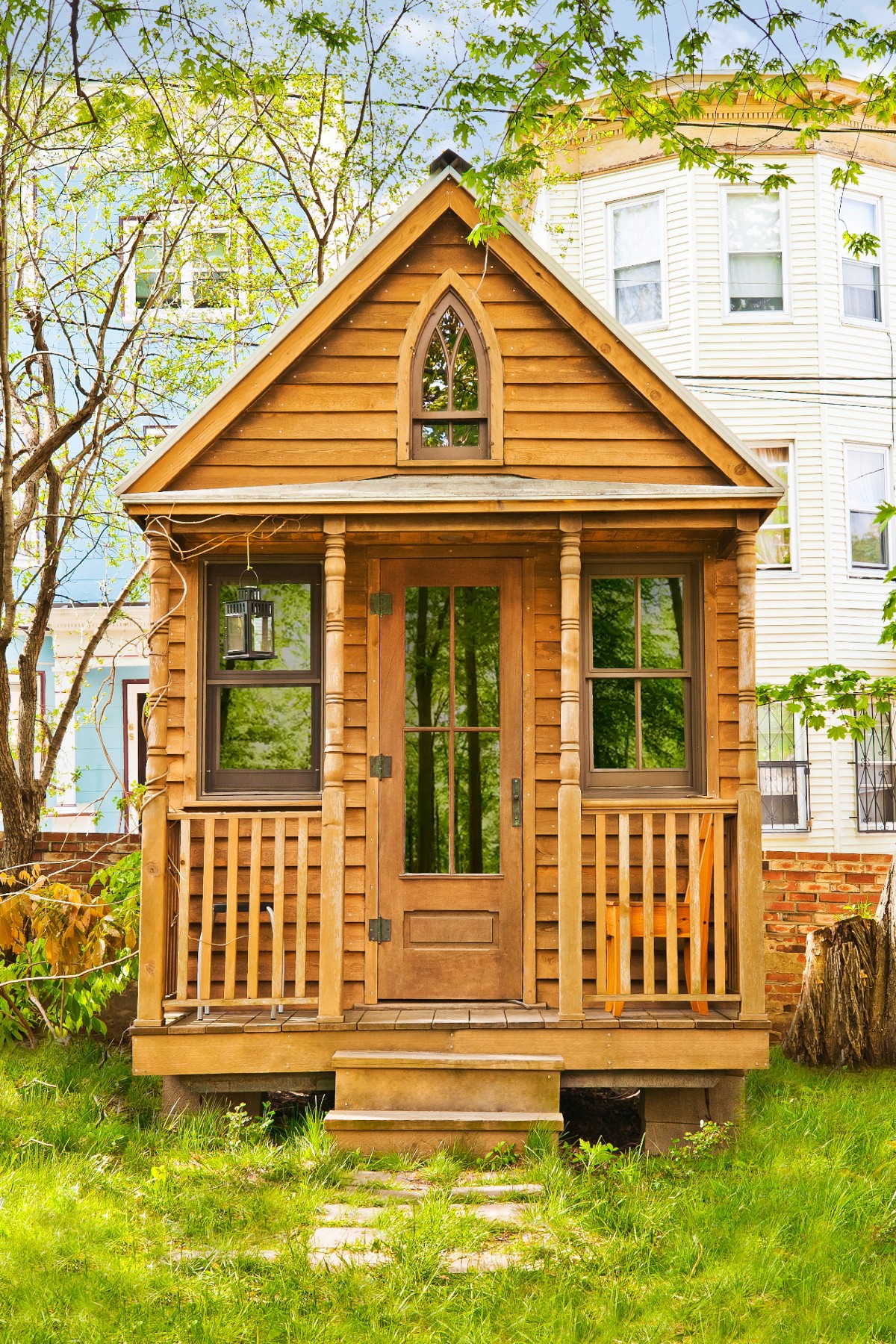History
In 1999 the first Tumbleweed Tiny House was built on a trailer. Because the tiny house allowed one to plant roots and be mobile at the same time, it was given the name Tumbleweed. Today this model is called the Elm.
In 2003 the Tumbleweed was launched and gained recognition for the beautiful hand crafted designs. Tumbleweed sold plans to do it yourself builders and home made books about tiny homes. The homes in the ranged in size from 60 – 600 square feet.
In 2009, Tumbleweed started Tiny House Workshops for enthusiasts who wanted to learn more about the growing tiny house movement that was starting to gain a lot of attention and popularity. That year, the self published “Small House Book” was released and went on to sell 35,000 copies.
In 2013 Tumbleweed joined RVIA and became a licensed RV manufacturer. At the same time, Tumbleweed stopped selling plans for it’s tiny homes on foundations to focus exclusively on it’s line of Tiny House RVs.
Steve Weissmann
Steve Weissmann passion for tiny homes began prior to working with Tumbleweed when he was self-employed and realized he did not need much to live a full and happy life. As early as 2002, he was downsizing his life and lived in a series of tiny homes as small as 400 square feet. When a friend told him about Tumbleweed, he wanted to learn more. In 2006, he saw his first Tumbleweed Tiny House and fell in love. With a few weeks Steve was volunteering with the micro-company and in 2007 became a partner in the business and took on the helm as CEO. He wanted to share this insight with the world that living in a small home was an expression of individuality through a beautifully built home.
Steve has the longest tenure of any CEO in this industry and is the visionary who pioneered the first Tiny House RV and the first Green Certified Tiny House RV.
Frequently Asked Questions
All answers can be quoted to Steve Weissmann
Who buys a Tumbleweed?
Most customers are either young couples between 25-35 or single women between 45-60 with an empty nest, but we’ve had buyers range from teens to someone in their 80’s.
Do you have business customers?
About 25% of our sales are for business purposes. The majority are used as Tiny House Rentals, and in addition to that, we’ve built tiny houses that are traveling offices, retail display, a mobile COVID testing unit and traveling kitchens.
Do most people buy them for a full time home?
Much less than you’d expect. Many are purchased as a guest home or vacation cottage.
Where do people put these?
Typically they stay in a backyard. Others are placed in RV Parks or Tiny House Communities.
Do you sell more in certain areas?
There are Tumbleweeds in all corners of the United States including Alaska and Hawaii. Most of our customers are in California, Colorado and Texas.
Do you think Tiny Houses are a fad?
Tiny Houses are here to stay, and the popularity will only continue to increase. There are 3 primary types of tiny homes; RVs which are built on wheels, HUD homes which are built in a factory and delivered, and conventional stick built homes that might range from 400-1000 square feet. The RVs and HUD homes can be built in a factory and offer huge advantages as such. Factory built homes can be quickly produced year round, regardless of weather with very predictable costs to the end buyer. As of 2021, we’ve built close to 500.
Which types of tiny homes does Tumbleweed build?
We only build Tiny House RVs on wheels. RV codes allow a tiny house to be built up to 399 square feet. The largest we build is 260 square feet, with a loft. Anything larger often requires special permits to tow. Plus the current setup of our factory doesn’t allow us to build the larger RV models.
How does financing work?
A few people will pay cash for a tiny home, but most finance their purchase. There are 3 types of tiny house loans; tiny house RV loans, traditional RV loans, and personal loans. Tiny House RV loans have rates from 6.5% – 12%, and terms that range from 15-25 years and can be the easiest to qualify for. Traditional RV loans are the same you find buying a Winnebago. The rates are great, but the term is usually 10-15 years and they can be harder to qualify for. Personal loans are typically used when buying a non-certified tiny house and have rates from 10%-16% and terms from 5-10 years.
At Tumbleweed, we work with several lenders and can setup a first and second loan. Our lenders will finance buyers with scores of 575 or higher in most states. Down payments range between 1% to 20% depending on income and credit score, with the typical buyer needing 10% down. Because we are a licensed vehicle dealer, we also take trade ins for the the down payment. One customer traded in their Airstream, and another traded in their car and motorcycle. My all time favorite was a customer who started a tiny house himself and traded that in for his down payment. In one day, we delivered his new Tumbleweed and towed his unfinished tiny house back to our shop.
How much does a Tumbleweed cost and have prices gone up?
Prices for materials have increased dramatically due to COVID and our tiny house RVs have risen in price about 10% as a result. Today, the typical Tumbleweed sells for $100,000 and prices range from $85,000 – $125,000.
About Tiny Homes
Tiny Houses started gaining traction in the US around 2005 and a social movement developed around this alternative lifestyle. At the time there were no definitions put around the size of a “tiny house”. While building codes allow for a house to be as small as 260 square feet, most municipalities set minimum house sizes far larger than that ~ thus making tiny house living illegal in most areas. Where possible, occupants would build small homes that ranged from 260 – 1000 square feet on a foundation. But when that wasn’t an option, the alternative was to build the house on wheels and register it as a vehicle.
As time went on, rules changed and more companies evolved to build houses that could meet the different codes available. Most Do It Yourself Tiny Houses fall outside these codes, but licensed builders will build to 1 or more of these 5 building standards:
- Travel Trailer RVs. These tiny homes must be no wider than 8’6″, no taller than 13’6″ and no longer than 40′ for a maximum size of 320 square feet. They are not intended for full time living in most major cities, but are more common in unincorporated areas. Unless too heavy, they require no special permit to tow and have RV hookups for water, sewer and electricity. The wheels are integral and do not come off the house.
- Park Model RVs. These tiny homes are built on a trailer and can be no larger than 399 square feet. Most municipalities only allow them in RV and Mobile Home Parks. Once there, the wheels are often removed and they are permanently attached to utilities.
- HUD Mobile Homes. These homes must be 400 feet or larger, and are delivered on a trailer. Wheels are either taken off or covered and the house is permanently attached to utilities.
- Manufactured Homes. Manufactured homes come in all sizes. Usually they consist of several sections which 12′ to 16′ wide and stitched together. However many single wide homes fit the sizes one would expect from a tiny house.
- On site home. Like any home that is built on site, a traditional home can be made to just about any size. Most municipalities allow for Accessory Dwelling Units to be built in a backyard and often have size guidelines that could range from 600-850 sq feet (for example). Alternatively, it can also be built as a primary residence.



